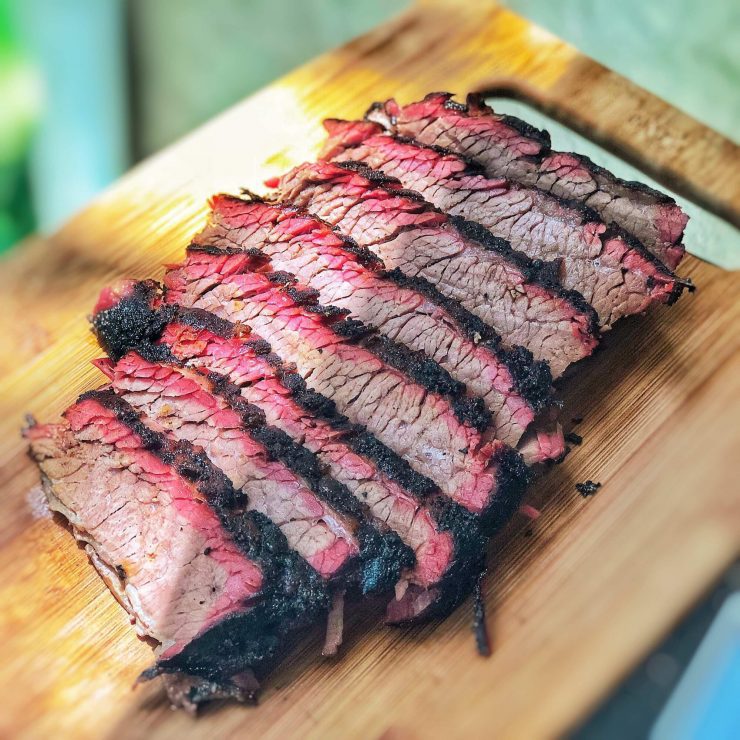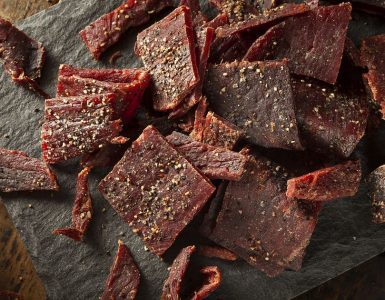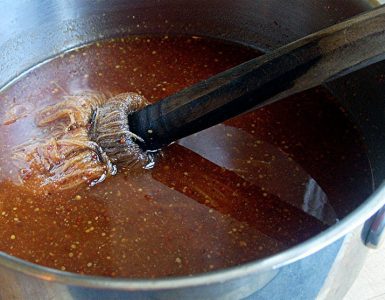We’re returning to school with a flash class called Smoke Ring 101: Science or Myth, which dives into smoking meats.
If you’re into smoking meats then you have heard about the elusive smoke rings that appear in the best barbecue. Smoke rings are always a source of conversation among grillmasters almost like old fables or mythical legends.
The smoke ring involves Science. Say that again. Science.
Smoke rings are a rosey-pink layer of protein just beneath the crust of barbecued meats, usually around a few millimeters in thickness.
The most popular proteins that showcase a smoke ring are briskets, pork shoulders or ribs.
Why People Love Smoke Rings
Smoke rings in finished BBQ dishes are signs that an authentic process was used when making the meal. The rings are considered a mark of quality by BBQ traditionalists.
They were once used by competition judges as a mark of excellence, however, due to chemical methods to enhance a pink ring by using curing salts, rings are no longer a criterion in professional competition judging and are arguably considered cheating.
Smoke Ring Science
The old-school, diehard BBQ enthusiasts, we dare say traditionalists, have vehemently proclaimed the amount of white smoke you introduce to your smoke session will determine the presence of a smoke ring.

This simply isn’t true … for the most part. Confused? Don’t be.
Smoke rings come from burning wood, that’s true. But, the ring isn’t formed from billowing white smoke around meats in a smoker. A smoke ring is formed by the reaction between a protein found in meats and the gases released from burning wood.
That protein is called myoglobin. This protein’s main function is to supply oxygen to the cells in muscles.
The important gases emitted from the burning wood are called nitric oxide, NO, and carbon monoxide, CO.
When myoglobin, nitric oxide and carbon monoxide combine, a chemical reaction sets the pink color in a smoke ring.
Increase odds for better smoke rings
The best way to increase your chances are forming a super smoke ring at your next grill session, consider the following information.
Make sure your protein has high myglobin content as it varies by animal type, and in some cases age (but who really knows how old their meat is at the butcher?). Beef has the most myoglobin, followed by pork and then chicken. So if you’re looking for a good smoke ring on chicken, you will have your work cut out for you.
The next consideration is moisture. A wet surface on your protein will enhance nitric oxide absorption, so if your spritz or baste during your smoke, you are helping establish that smoke ring.
Have you ever heard the tip from old timers that you should let your proteins come to room temperature before cooking? Well, not if you want a nice smoke ring.
Starting your smoke with cold proteins promotes better ring formation through condensation.
The low and slow method of smoking meats also enhances your chances of a nice smoke ring by allowing deeper penetration of gases from the wood smoke.
POP QUIZ: Could adding a water pan to your smoke increase your chances at a nice smoke ring? (Answer at the end of article)
Another factor is your fuel. Are you using wood? Charcoal? Electric element?
Wood and charcoal produce more nitric oxide and carbon monoxide than electric smokers. If using an electric smoker, consider a wood-chip burner box and a water pan when smoking meats.
Finally, think about removing those fat caps from your proteins before smoking. Fat blocks gas penetration and prohibits the smoke ring from forming fully.
Avoid using vinegar or citrus juices on the outside of your proteins when smoking as it can prevent a smoke ring from developing. If you want that flavor in your protein, consider injecting instead.
Smoke Ring Mythology
Let’s just put it out there and leave it at that.
Smoke rings don’t affect flavor. No matter what Uncle Eddie told you when you were 11 at the Fourth of July cookout, it just ain’t true. In fact, you could have the most beautiful smoke ring around the edges of your protein and still have tough, dry meat.
The pink color of the smoke ring does NOT indicate under cooked meat. Refer back to your lesson when answering this for others.
Tips for Great Smoke Rings
- Use wood or charcoal for fuel
- Remove surface fat before smoking
- Start with cold meat and cook low and slow
- Keep meat surface moist through basting or spritzing
- Cook low and slow
- Use a water pan in the smoker for added moisture
Remember, while smoke rings are visually appealing and indicate proper smoking technique, they don’t necessarily impact the flavor of the meat. The most important factors in great barbecue are still the quality of the meat, the seasonings used and the overall cooking process — along with a little bit of love for the grill!
Happy Grilling! QUIZ ANSWER: Could adding a water pan to your smoke increase your chances at a nice smoke ring?YES, 100 percent
Homework
Now that you have enhanced your knowledge of the smoke ring put your skills to the test and make this Texas-Style Brisket for your friends and family. See if you can achieve a fatastic smoke ring and be the talk of the ‘hood.

Texas-Style Brisket
Ingredients
- 1 beef brisket (prime) trimmed
- 1 Tbsp chili powder
- 2 tsp garlic powder
- 1/2 tsp cumin powder
- 1/4 tsp dried thyme
- 1 Tbsp sea salt
- 2 Tbsp coarse black pepper
Instructions
- Start with a high quality packer brisket. Trim and remove excess fat from the fat cap. Season generously with all of the mixed dried spices.
- Heat smoker or grill to a temperature between 225 degrees Fahrenheit and 235 degrees Fahrenheit Place the brisket on the opposite side of the heat and maintain steady temperature until the brisket reaches 150 degrees.
- Remove brisket and wrap fat side up tightly in thick-stock butcher paper (40-pound, 18-inches wide). This is commonly referred to as a “Texas Crutch” as it will help speed up the stall and retain moisture.
- Return brisket to smoker at 225 degrees Fahrenheit to 235 degrees Fahrenheit. You will run into the brisket stall, but don’t worry. Patience will get you through it, trust the science.
- Continue cooking until internal temp of brisket reaches 202 degrees Fahrenheit. We use a Thermoworks Thermapen ONE for an instant reading, but have found the Thermoworks Signals is even more convenient, detailing meat and air temperatures. Pair with a Billows, and you’re in business!
- Remove the brisket from the heat and store in a cooler for 1 to 2 hours. After the brisket rests, remove it from the paper and slice against the grain. Serve with bacon-baked beans and jalapeño corn bread.














